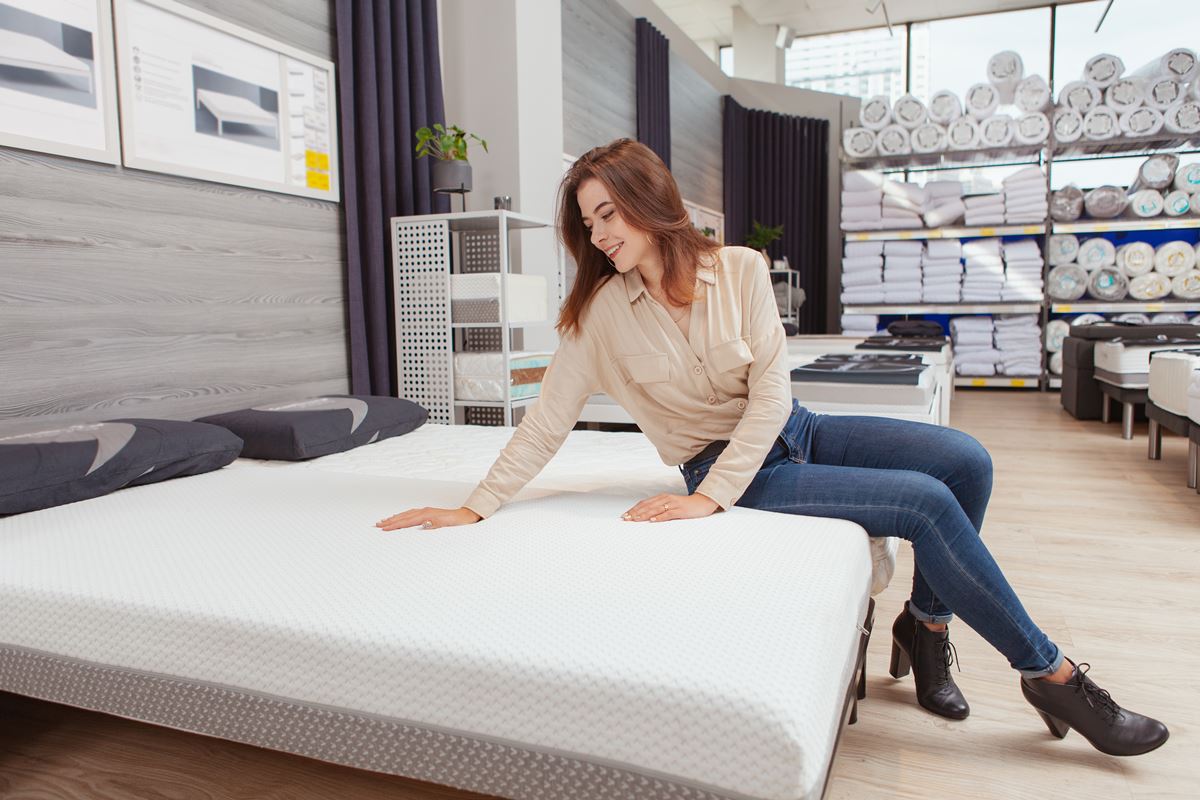Sleep is fundamental in maintaining your health. But sometimes, getting a good night’s sleep isn’t always easy, especially if your bedroom is not conducive enough for sleep. One way to boost your sleeping experience is getting a high-quality mattress. Experts say that your choice of mattress greatly affects your ability to sleep well.
A new mattress is a costly investment, which is why it’s crucial to choose the one that can give the best comfort and your money’s worth. But with many options, choosing one may not be easy. To help you select, this article provides a step-by-step guide to finding the perfect mattress.
#1 Know the Different Mattress Materials
Before you can find the best mattress, learn the different mattress materials for you to choose from.
Innerspring mattress
This type of mattress uses coils for its support system. It provides firm support and has the traditional bouncy feeling. However, the innerspring mattress may lack pressure relief and can only offer limited motion isolation.
Latex mattress
Latex offers more bounce and is more durable compared with innerspring. It also provides a cooling effect on your body. Because latex can be made from organic and natural materials, eco-conscious buyers may opt for this option.
Memory foam mattress
Memory foam conforms to your body and sleeping position. It makes an excellent option for people who frequently experience body pain during sleep and would like to relieve pressure.
Hybrid mattress
A hybrid mattress consists of combined layers of latex or memory foam with coils. It’s designed to provide a mix of support, bounce, softness, and low heat retention.
Air mattress
For this type, you’ll need to use an air pump to inflate the mattress based on your preferred firmness. Many couples love to use the air mattress due to its flexibility. Each bedside has a different chamber to accommodate sleepers requiring different firmness levels.
#2 Consider Your Sleeping Position
Your typical sleeping position should be considered when choosing a new mattress. A mattress that can provide support and comfort on certain parts of your body will help maintain spinal alignment and reduce body pain.
Back Sleepers
Back sleepers put the most pressure on their lower back. Using a mattress that’s too soft may cause your torso to sink deeper, putting you in a U-shaped position and causing a strain on your body. Meanwhile, a mattress that’s too firm can’t form a slight curve on your back, causing strain and backache the next day. The ideal mattress for back sleepers is the medium-firm memory foam or latex mattress, as it can conform to your body and support your spine and lower back.
Side Sleepers
Because side sleepers put more weight and pressure on their hips and shoulders, they’re more prone to spine misalignment. Their best option is using a medium-soft or medium-firm latex mattress to provide relief and comfort on the pressure points.
Stomach Sleepers
Ample support should be the main priority for stomach sleepers. Because stomach sleepers put more pressure on their lumbar spine, they’ll need a firm mattress that would prevent them from forming a U-shaped body when lying face-down. Preferably, the best mattress for stomach sleepers is a firm hybrid or innerspring mattress.
Combination Sleepers
Combination sleepers have multiple sleeping positions throughout the night. Hence, they may sleep best with medium-firm mattresses to accommodate any sleeping position.
#3 Pick a Mattress That Accommodates Your Body Type
Like your sleeping position, your body type should also influence your decision when choosing a new mattress. That’s because the required firmness level of your mattress depends on your body weight. Here’s a quick guideline for your reference:
Light (150 pounds or less)
People with a lighter profile may feel most comfortable with a medium-firm mattress (5-6 firmness) as you can’t sink as far as heavier people. For lightweight side sleepers, you may opt for a 3-4 firmness range on a hybrid or memory foam mattress for a softer feel.
Average (151 to 200 pounds)
Average-weight people can go for their preferred mattress that matches their sleeping position. But if you’d like to have a softer bed for optimal comfort, you can go within a 3-5 firmness range.
Heavy (over 200 pounds)
Heavier people may put more pressure on their bodies, making them susceptible to sinking deeper and experiencing spine misalignment. Ideally, they must choose a firmer option, such as a firm innerspring mattress.
#4 Determine Your Budget
Suppose you now know which type of mattress and firmness level you’re looking for. It’s time to set and determine your budget. It’s not always good to assume that the most comfortable mattress is the one with the highest price tag. Thus, do your research about the materials, brand, how the mattress is made, type of construction, and so on. A mattress is an expensive investment, so ensure you’re spending your money on the one that can give you utmost comfort and body support.
#5 Read Reviews or Ask for Recommendations from Real Customers
Take your time to read reviews and ask for recommendations from genuine buyers. Don’t depend too much on mattress stores and their company descriptions, as they’ll most likely market their mattresses positively. Go for reviews or recommendations with unbiased and mixed feedback as they’re more realistic and are likely based on experience.
Key Takeaway
Choosing a mattress should be a personal decision as your mattress can directly affect your sleep quality and spine health. So, take note of these steps, and you’re guaranteed to find the mattress that best works for you.
Published in: Home advice | Author: Lynn








